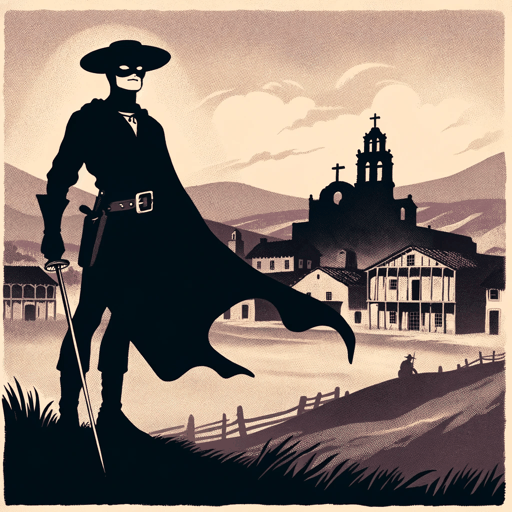62 pages • 2 hours read
Isabel AllendeThe Stories of Eva Luna
Fiction | Short Story Collection | Adult | Published in 1989A modern alternative to SparkNotes and CliffsNotes, SuperSummary offers high-quality Study Guides with detailed chapter summaries and analysis of major themes, characters, and more.
Summary and Study Guide
Overview
The Stories of Eva Luna is a collection of short fiction by best-selling Chilean author Isabel Allende. The collection—first published in Spanish in 1989 and in English in 1991—is a follow-up to Allende’s 1987 novel, Eva Luna. Eva is the narrator of the stories in the collection, which is structured as a frame story with the Prologue harkening back to Eva Luna.
Isabel Allende is famed for her work in the genre of magical realism and her writing on 20th-century Latin American politics and society. Allende has written 18 novels and four memoirs. In 2004, she became a member of the American Academy of Arts and Letters, and in 2010, she was awarded the National Literature Prize in Chile. In 2014, Barack Obama awarded Allende the Presidential Medal of Freedom.
The Stories of Eva Luna features elements of magical realism and is set in an unnamed Latin American country after World War II. Like her debut novel The House of the Spirits, the setting bears many parallels to Chile, though other details in Eva Luna’s story also link her with Venezuela. The collection includes 23 short stories and discusses themes of female sexuality and resilience. The concept of storytelling as a coping mechanism and tool for survival is also a prominent theme.
This guide discusses the 2016 Atria paperback edition of the collection, translated by Margaret Sayers Peden.
Content Warning: The source material includes depictions of or allusions to abduction, imprisonment, torture, sexual violence, pedophilia, and death by suicide. In addition, the source material uses outdated and offensive language to refer to racial and ethnic groups, which this guide only reproduces in direct quotes.
Plot Summary
In the Prologue, narrated by Eva’s romantic interest, journalist Rolf Carlé, Rolf asks Eva to tell him a story. She agrees; the following 23 stories are new tales supposedly created by Eva just for Rolf. Although Rolf asks Eva to make up stories for him so that they’ll be stories she’s never told before, many of the stories connect to Eva’s life events as told in the novel Eva Luna. In those cases, Eva implies that the stories are ones she has kept secret until now. It is also likely that Eva is inspired by events and people in her life but that she fictionalizes the stories to fit her desires and what she thinks Rolf needs to hear.
Though all are narrated by Eva (except for “Walimai,” in which Eva repeats a story that was told to her by a friend), the stories vary in tone and style. The stories often feature female protagonists and incorporate feminist concerns. Women are often mistreated by a patriarchal society, which prioritizes the desires of men. In other stories, Allende celebrates expressions of female sexuality and desire.
In the first story, “Two Words,” the protagonist Belisa makes a living by selling words and stories to people. Having been born into an illiterate and impoverished household, Belisa first teaches herself to read and then develops a near-magical grasp on language, inventing words so that she has unique offerings for her customers. Belisa develops a reputation that eventually leads a prominent rebel military leader, the Colonel, to seek her out for help in his political campaign. She whispers to him two secret words that burn like hot coals in his mind, leaving him unable to think of anything other than her. The narrator never reveals what the words are, but they bring the Colonel back to Belisa, and the story ends with the pair gazing longingly at each other.
Other stories deal with romantic love, although not always with happy endings. In “Simple María,” the protagonist’s sexual passion is awakened by a lover who then deserts her. She pursues a profession as a sex worker because she enjoys sex and because she wants to perfect the art of love for the moment her lover returns. As she ages, she develops a reputation for making her clients feel like they are truly loved, but she is kept waiting for her true love. “The Little Heidelberg” is another romantic story in which a man finally proposes to a woman after 30 years of being in love with her and admiring her at their weekly dance club. The woman, as if by magic, disappears, creating an ambiguous ending. In “Our Secret,” two unnamed strangers meet and, in the process of becoming lovers, discover that they were both tortured by the country’s dictatorial regime. They heal by connecting, and yet the tone of the story (and others in the collection) asserts that the trauma and scars from such abuse are impossible to overcome entirely.
At the heart of the collection is the concept of storytelling as a powerful tool for healing and shaping one’s reality. This theme is established by the frame story structure, which posits Eva Luna as a modern-day Scheherazade, the narrator from One Thousand and One Nights. Storytelling is also emphasized in the tales themselves. In the last story in the collection, “And of Clay We Are Created,” Eva tells Rolf a story about himself. Reporting on a devastating natural disaster, Rolf meets a young girl who is trapped in mud and debris. He waits with her for three days and three nights while the rescue workers try to find a way to free her. To pass the time and calm her, Rolf tells her stories. He first tells her about his life and then repeats the stories that Eva has told him. After the girl dies, Rolf is distraught with grief and has reawakened long-suppressed memories of his own childhood trauma. The collection closes with Eva’s confident assertion that he will find his way out of his grief and that she and her stories will be there to help him through it.








Related Titles
By Isabel Allende
Featured Collections
Books & Literature
View Collection
Books that Feature the Theme of...
View Collection
Challenging Authority
View Collection
Friendship
View Collection
Hispanic & Latinx American Literature
View Collection
Magical Realism
View Collection
Power
View Collection
Romance
View Collection
Valentine's Day Reads: The Theme of Love
View Collection
















